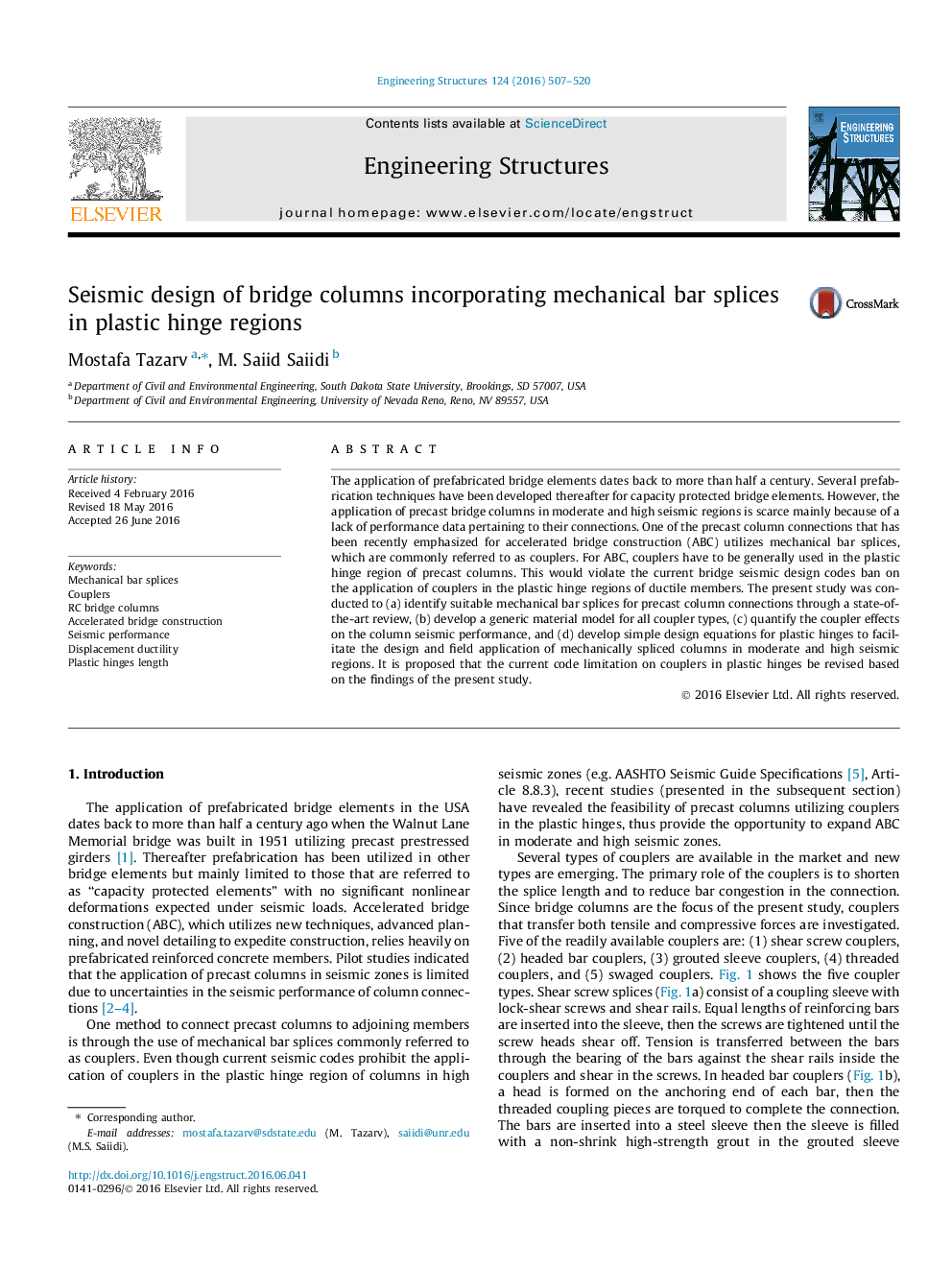| Article ID | Journal | Published Year | Pages | File Type |
|---|---|---|---|---|
| 265644 | Engineering Structures | 2016 | 14 Pages |
•This study facilitates the field deployment of mechanically spliced columns in moderate and high seismic regions.•A state-of-the-art review on mechanical bar splices was presented.•A general material model for mechanical bar splices was presented.•Coupler effect on the seismic performance of bridge columns was quantified.•Simple design equations were developed for mechanically spliced columns.
The application of prefabricated bridge elements dates back to more than half a century. Several prefabrication techniques have been developed thereafter for capacity protected bridge elements. However, the application of precast bridge columns in moderate and high seismic regions is scarce mainly because of a lack of performance data pertaining to their connections. One of the precast column connections that has been recently emphasized for accelerated bridge construction (ABC) utilizes mechanical bar splices, which are commonly referred to as couplers. For ABC, couplers have to be generally used in the plastic hinge region of precast columns. This would violate the current bridge seismic design codes ban on the application of couplers in the plastic hinge regions of ductile members. The present study was conducted to (a) identify suitable mechanical bar splices for precast column connections through a state-of-the-art review, (b) develop a generic material model for all coupler types, (c) quantify the coupler effects on the column seismic performance, and (d) develop simple design equations for plastic hinges to facilitate the design and field application of mechanically spliced columns in moderate and high seismic regions. It is proposed that the current code limitation on couplers in plastic hinges be revised based on the findings of the present study.
